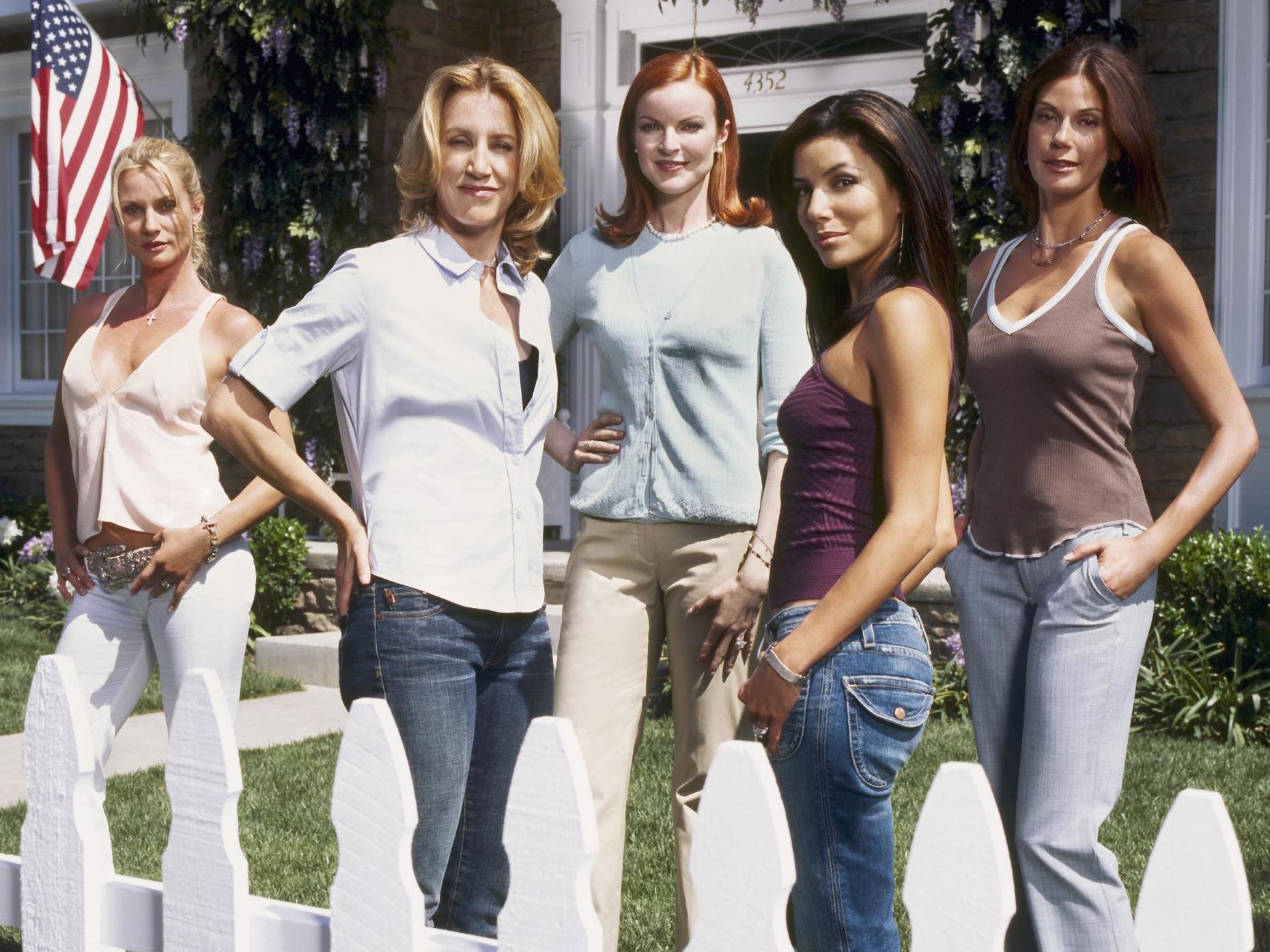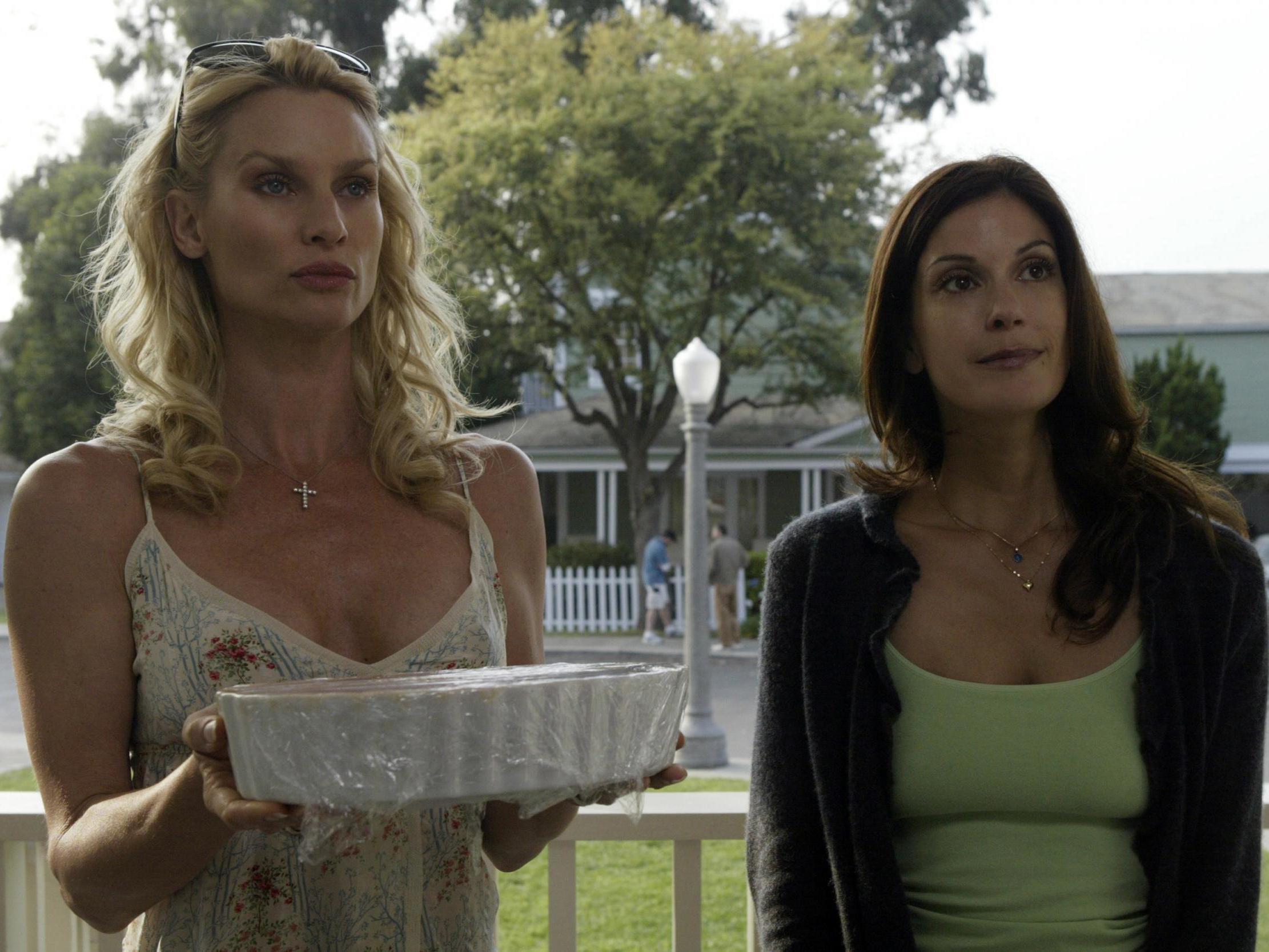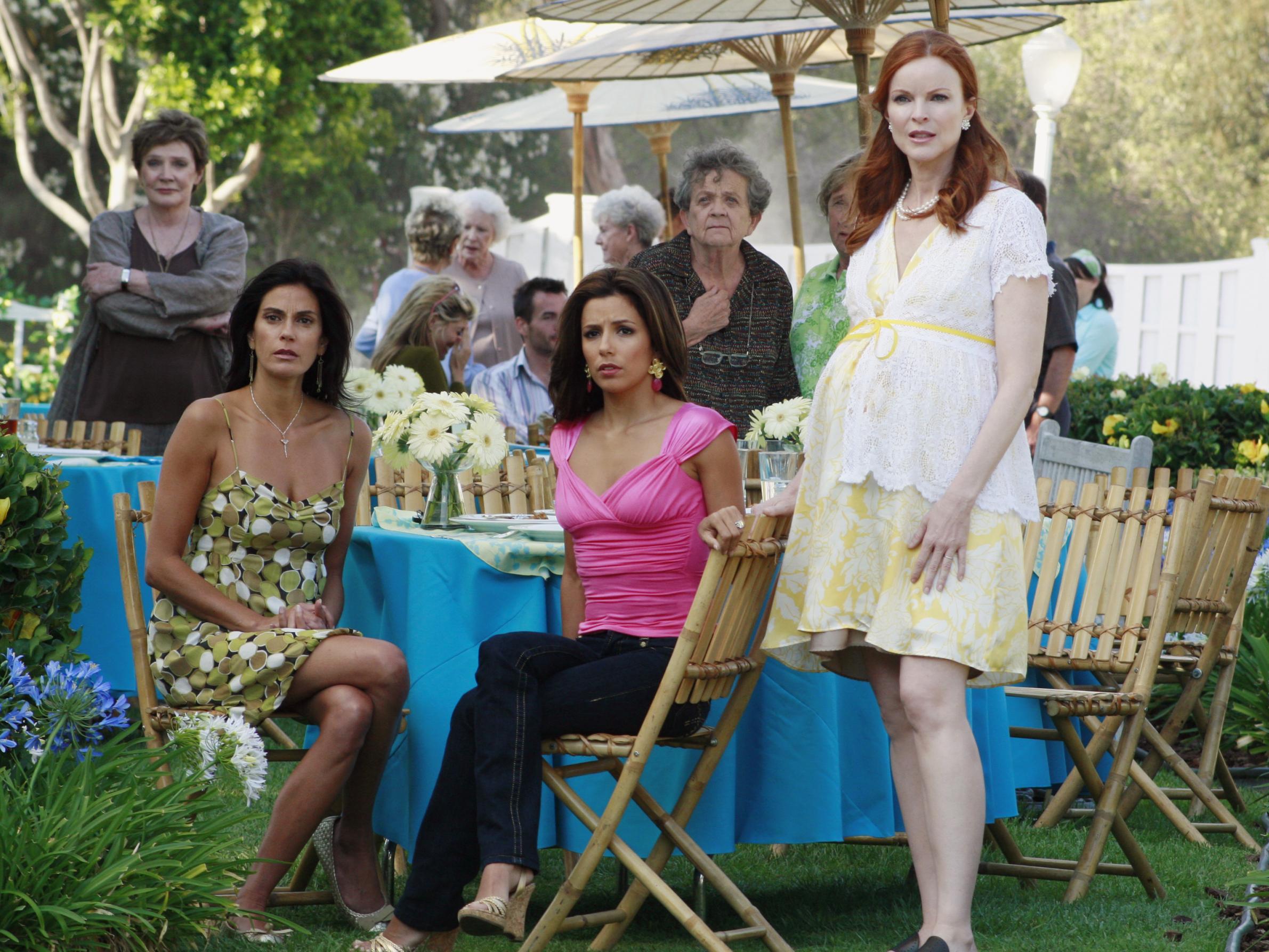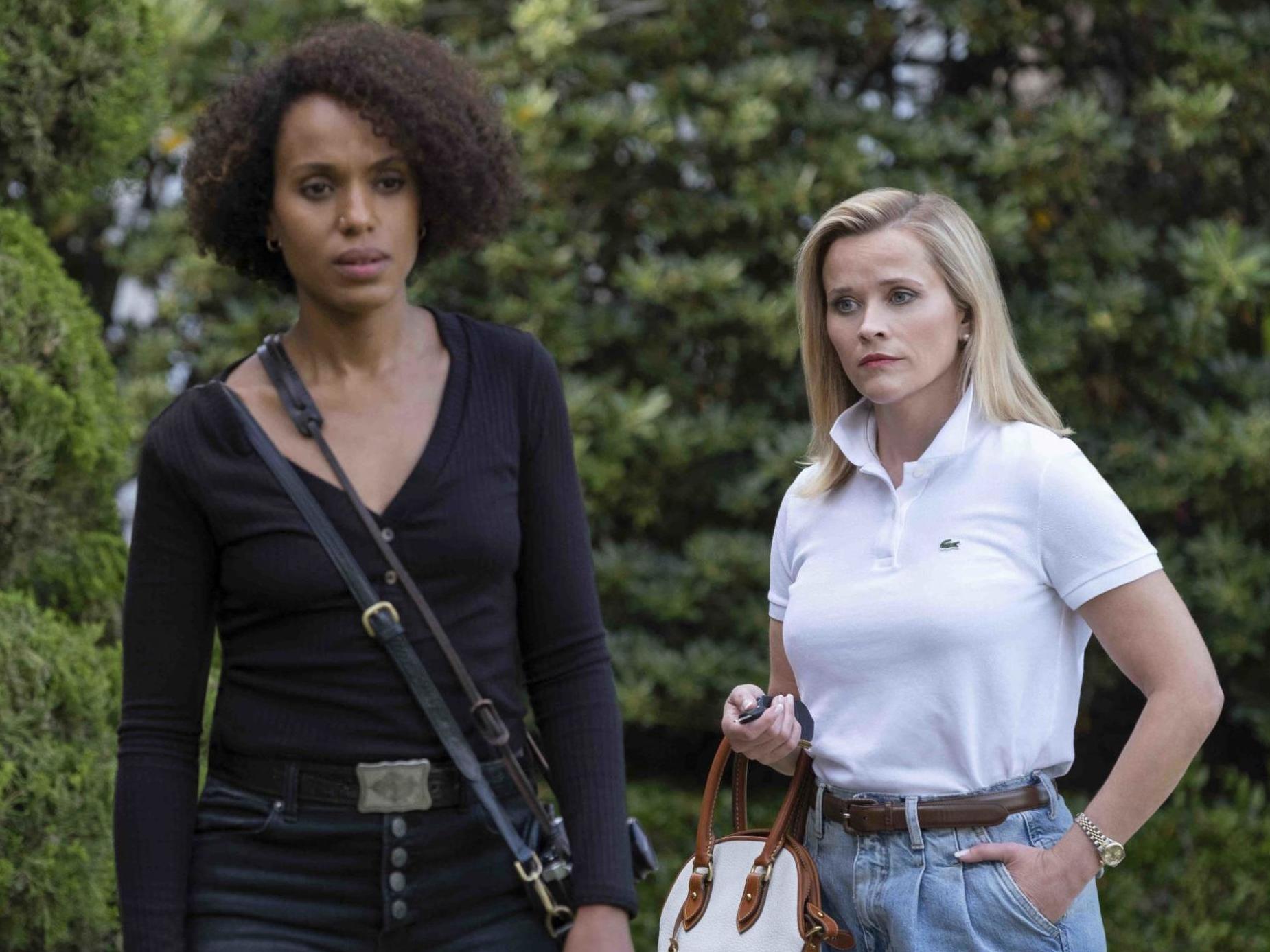Suburban housewife blues: How Desperate Housewives blazed a trail for Big Little Lies and Little Fires Everywhere
Marc Cherry’s blackly comic vision of suburban life was initially dismissed by some as cheap melodrama, writes Ed Power, but its influence on TV can be palpably felt today

Your support helps us to tell the story
From reproductive rights to climate change to Big Tech, The Independent is on the ground when the story is developing. Whether it's investigating the financials of Elon Musk's pro-Trump PAC or producing our latest documentary, 'The A Word', which shines a light on the American women fighting for reproductive rights, we know how important it is to parse out the facts from the messaging.
At such a critical moment in US history, we need reporters on the ground. Your donation allows us to keep sending journalists to speak to both sides of the story.
The Independent is trusted by Americans across the entire political spectrum. And unlike many other quality news outlets, we choose not to lock Americans out of our reporting and analysis with paywalls. We believe quality journalism should be available to everyone, paid for by those who can afford it.
Your support makes all the difference.Suburbia used to be America’s refuge from the big bad world. But across the past decade and a half, television has recast it as a place of festering evil, dangerous desires and creosote-black humour. True, the concept of the ’burbs as a secret wellspring of unspeakable horror goes all the way back to David Lynch and Twin Peaks. However, it has taken a new generation of TV to flesh out that vision and serve it to a mass audience as piping-hot satire (Twin Peaks was too weird and unnerving to qualify as parody).
This idea of picket fences and glistening driveways concealing a profound wrongness receives a glamorous update in Amazon’s hot new series. Little Fires Everywhere, adapted from Celeste Ng’s 2017 bestseller, stars Reese Witherspoon as an all-American mom, with the perky smile and the blinding white Lacoste polo shirt to prove it.
She is drawn into a dance of mutually assured emotional obliteration with a bohemian newcomer, portrayed by Kerry Washington. Things quickly turn bleak. And on the slippery slope down space is found for some wry lampooning of middle-class scruples.
If this feels like a formula then that’s because it is. The same mix of melodrama, thriller and sly spoof whirrs at the heart of Dead to Me, the Netflix “traumedy” featuring Christina Applegate and Linda Cardellini as grieving women whose opposites-attract friendship yields more than either bargained for.
They laugh, they cry, they bung a corpse in a freezer. A dead body similarly looms in the background of the HBO/Sky Atlantic blockbuster Big Little Lies (as with Little Fires Everywhere, it stars and is co-produced by Witherspoon). Here, viewers can chose between investing in the central murder-mystery – was it even a murder? – or simply sitting back and gawping at Nicole Kidman’s never-ending kitchen. You may, if you wish, do both. It certainly isn’t obligatory.

Where did it come from, this distinctive mash-up of whodunit and pastiche of the chattering classes? The answer doesn’t require much sleuthing around. The genre was born on 3 October 2004, the day Desperate Housewives aired on America’s ABC network for the first time.
The suburban burlesque, it is true, long predated Wisteria Lane, the fictional setting for Marc Cherry’s ratings-devouring melodrama. In 1990, David Lynch put his stamp all over it with Twin Peaks. That series argued that there is nothing so strange in this world as a place that believes itself the epitome of normality.
Desperate Housewives, which starred Teri Hatcher, Felicity Huffman, Marcia Cross and Eva Longoria as the eponymous homemakers, was different in that it juggled suspense and comedy. It was light, it was dark, it was funny, it was soapy. All of that was made clear in its opening two minutes, which introduces narrator Mary Alice Young (Brenda Strong).
In a silky voiceover. she welcomes the viewer to her flawless life, her wonderful husband and son. And then she reaches for a gun in her cupboard and blows her brains out. The “thud” is heard by an inquisitive neighbour. She goes snooping on the pretence of returning the borrowed blender to which Young’s name is still affixed.

Watch Apple TV+ free for 7 days
New subscribers only. £8.99/mo. after free trial. Plan auto-renews until cancelled

Watch Apple TV+ free for 7 days
New subscribers only. £8.99/mo. after free trial. Plan auto-renews until cancelled
Seeing the body, the neighbour immediately calls the police. Then she whips Young’s name off the blender and shoves it into her own cupboard. From the beginning, tragedy and chuckles are perfectly interwoven.
It’s a tone Desperate Housewives would maintain through all eight seasons and which has become the standard for this new genre, in which the shadows cast by the aforementioned and obligatory white picket fences lie heavy and menacing. Its other innovation, of course, was to tell its stories from a female viewpoint, something Lynch, for instance, had little interest in doing in Twin Peaks.

He was more interested in the perspective of dancing dwarfs and talking trees than in those of his female characters. These broadly fell into the two categories of vamping femme fatale and middle-aged crazy.
Desperate Housewives did something revolutionary, by comparison. And it was arguably far more subversive than Lynch, with his log ladies and doomed cheerleaders. Series creator and show-runner Cherry built a prime-time drama around the star power of four largely middle-aged actresses. Hatcher was 40 when Desperate Housewives began, Felicity Huffman 41, and Marcia Cross 42. Longoria, the “baby” of the crew, had just turned 29.
Their characters were archetypes, just not the ones typically encountered on television. Hatcher’s Susan Mayer was a well-meaning scatterbrain trying to put her life back together after her husband leaves her for his secretary.
Huffman played Lynette Scavo, a one-time high powered executive who feels she is failing to live up to the standards of perfect motherhood demanded by society. Marcia Cross portrayed Bree Van de Kamp as an exaggeration of the uptight Stepford Wives stereotype, loathed by her family and with a smile so brittle that it felt perpetually on the brink of shattering. And Longoria’s Gabrielle Solis was a former model adrift in a sleepy marriage and conducting an affair with her teenage gardener.
The central mystery was watertight, too. Episode by episode across the first season, Desperate Housewives dropped breadcrumbs as to why Young would have thrown away her showhouse life and put a revolver to her head.
The big reveal, when it came, was crunchily satisfying. Young and her husband had bumped off the birth mother of their adopted son and buried her remains beneath their swimming pool. But now a neighbour – the one who had helped herself to Young’s blender – was blackmailing her about this terrible secret. So she ended it all.
Off-screen, the drama swirling around Desperate Housewives was almost as compelling as that unfolding before the cameras. Cherry was 42, broke and desperate when he wrote the pilot. One day, sitting in his tiny apartment at Studio City, in the San Fernando Valley, he had a vision of a blonde housewife holding a gun.
“I remember thinking of a woman who shouldn’t have a care in the world,” he recalled to Vanity Fair. “A woman who is living in a gorgeous house, where everything is beautiful, who just one day kills herself.”
Cherry submitted his draft to his agent in 2002. Everyone said “no”, from prestige kingpin HBO all the way down to the Lifetime Channel (perceived, ironically, as a housewives’ favourite). But then came a stroke of fortune – though Cherry understandably didn’t recognise it as such at the time. His agent was arrested for embezzling from her clients.
He himself was out of pocket by $79,000. Yet what Cherry lost in cash he made up for with a new agent, who quickly sold Desperate Housewives to ABC.
“I was an unemployed 42 year-old writer with an agent who embezzled from me and I had to send her to jail,” said Cherry of his years of struggle. “Plus, I was going broke at the time, so it was a double whammy. It was devastating, but because of that, I had to get new agents... [and] they were the ones who figured out how to sell this script about housewives I’d written.
“That changed my whole life, whereas my old agent had the same script, but couldn’t figure out how to sell it. My whole life turned on the fact this agent stole from me.”
He was obviously grateful to ABC for lifting him from obscurity. Cherry nonetheless knew his own mind and wasn’t about to have his head turned. Early on, he came under pressure to change the name of the series. One suggestion from on high was “The Secret Life of Housewives”. He dug in. Call it something else and Desperate Housewives would be a fundamentally different show.

Mary-Louise Parker and Calista Flockhart were the network’s first choices for Susan, the most sympathetic character and de facto audience surrogate. Both said “no”. Next to be approached was Heather Locklear, the iconic star of Melrose Place. Alas, she was already committed to another project. On went the search.
Cherry confessed that he “wasn’t excited” when Hatcher, aka Lois Lane from Lois & Clark: The New Adventures of Superman, auditioned for the part. By the end of the first table read, however, he had been brought thoroughly around.
He was impressed by her vulnerability, how she got under the skin of a divorcee yearning for the perfect life her neighbours found so asphyxiating and unfulfilling. Hatcher would later observe that her own experiences as a single mother had made her naturally empathetic towards Susan.
Yet if there was a happy ending for Cherry, life was less straightforward for his stars. Rumours of bad blood on set began leak into the press from season one. There were whisperings of bullying, of cast members not getting along with the crew.
Much of this would emerge years later when Huffman was prosecuted for her part in the college exam entrance cheating scandal. At the trial in 2019, Longoria came forward as a character witness. She told the court that Huffman had stood up for her when she was being badly treated by another Desperate Housewives cast member. There has obviously been lots of speculation as to the individual’s identity. This has, however, never come to light.
“I dreaded the days I had to go to work with that person because it was pure torture,” Longario wrote in a letter. “Until one day, Felicity told the bully ‘enough’ and it all stopped. Felicity could feel that I was riddled with anxiety even though I never complained or mentioned the abuse to anyone. I know I would not have survived those 10 years if it wasn’t for the friendship of Felicity.”
Cherry had much the same to say when he too wrote to the judge testifying to Huffman’s character (the actress was ultimately sentenced to 14 days behind bars and fined $30,000). “We had a problematic cast member on my show. She was a big star with some big behavioural problems. Everyone tried their darnedest to get along with this woman over the course of the show. It was impossible.
“And things went from bad to worse. At some point during season seven this woman decided she would no longer speak to her fellow cast members. Felicity still insisted on saying, “Good morning” to this actress, even though she knew she wouldn’t get a response.”
All of these tensions had come to a head in 2005, during an infamous Vanity Fair photoshoot. The location was the former Bing Crosby estate at Toluca Lake, 12 miles from downtown Los Angeles. There were some unusual stipulations – in particular, ABC’s insistence Teri Hatcher not have first pick of outfit. The reasoning was not explained and remains unclear to this day.
ABC was also adamant Desperate Housewives’ biggest star not be front and centre of the group photo. Inevitably, Hatcher arrived early and chose a striking red bathing suit.
“The first setup required the Ladies to assemble on or near a chaise and a chair,” wrote journalist Ned Zeman in his piece. “While Longoria lounged on the chaise, Huffman leaned against it, at far left. Nicolette Sheridan [who played the voracious Edie Britt in seasons one to five] took the chair at far right, flanked by Hatcher and then Cross … When Cross saw that Hatcher was beside her in an eye-popping cherry-red bathing suit, she exploded, grabbed her bathrobe, and walked off the set.”

Cross was eventually persuaded to return. Several ABC publicists were now swarming around, stressing again that Hatcher could not be front and centre. Amid the chaos, somehow the photographer got his shots. A break was suggested.
“Hatcher walked to the other end of the pool,” noted Zeman. “She got into a tearful, heated conversation on her cell phone.”
But if Desperate Housewives was a horror show off screen, on it, the drama was consistently sublime. It always made sure to add a dash of sugar to its cyanide-dark storylines. At the time it was largely written off as a guilty pleasure. It certainly never enjoyed the acclaim of other network smashes such as Lost, let alone tastemaker holy grails The Sopranos and Mad Men.
“It comes on like satire, but it’s too scattershot, too inconsistent, too over the top to make any significant points,” said the LA Times. “Desperate Housewives might be a little too smart for its own good,” added Variety. In the UK, it was an immediate hit, giving Channel 4 its highest peak audience for a drama since the launch of ER. Perhaps viewers were drawn by the whiff of scandal and reports that US advertisers were shunning it because of its mockery of family values.
“Its stars include Teri Hatcher, previously best known as Lois Lane in The New Adventures of Superman in the 1990s, who plays a love-starved divorcee hoping to start an affair with her sexy new neighbour,” went a report in The Independent at the time.
“Other characters include a domestic goddess who drives her family mad by being a control freak and a former model who has sex with the gardener behind her husband’s back.” With a pitch like that, who wouldn’t watch?
Desperate Housewives has gone on to outlive its more feted “prestige” rivals. Big Little Lies, Dead To Me, Gone Girl and Little Fires Everywhere all carry wisps of Wisteria Lane in their DNA. In its own unassuming way, Desperate Housewives rewrote the rules for TV drama.
“No one’s ever written about that aspect of female existence,” said Cherry when asked in 2010 to expand on the secret of the show’s success. “You get the life you want – and it still makes you crazy.”
Join our commenting forum
Join thought-provoking conversations, follow other Independent readers and see their replies
Comments